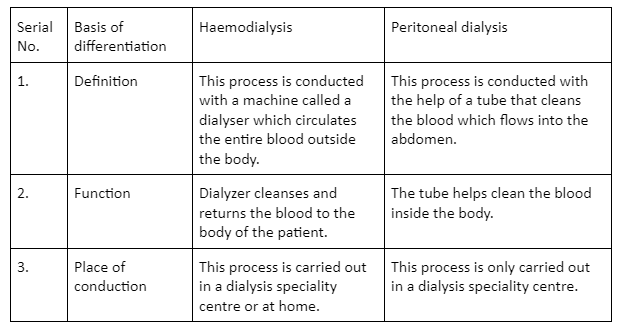An artificial kidney is a man-made kidney. When a kidney fails or stops working an artificial kidney is physically incorporated into the host. It is also called haemodialysis, a procedure performed to filter out waste products and water from the body.
Artificial Kidney is also associated with renal replacement therapies which do not include the kidney transplantation procedure. These artificial kidneys are grown from the renal cell lines.
What is the Definition of Artificial Kidney?
The artificial kidney was first developed by Willem Kolff in the early 1940s in the Netherlands. The first working dialyser was also developed by Kolff in 1943.
An artificial kidney is a device or a man-made machine that is used to perform the functions of a normal functioning kidney in case the human kidney fails to work. It is also called Haemodialysis.
Kidney
Kidneys are a pair of two bean-shaped structures located at the bottom of the rib cage behind the abdominal cavity. Kidneys perform the maximum functions of our body with the heaviest work pressure, and therefore, they can get damaged soon if proper care is not taken.
The functions of the kidney include:
- Ultrafiltration.
- Excretion of waste materials.
- Regulation of electrolytes and fluids.
- Stimulating the production of red blood cells.
The kidney helps filter nearly 100-140 litres of blood per day out of which 1 -2 litres of urine, the excess fluid composed of waste materials, is produced.
The gradual accumulation of salts in the body along with nitrogenous wastes, water, and sudden abnormalities in the pH balance of the body results in kidney failure. End-stage renal disease or ESRD is a condition that occurs slowly over a long period when the patient’s functioning of the renal declines.
A kidney is rarely diagnosed with abnormalities before it stops working or it stops working as soon as abnormalities occur. The process of dialysis (a procedure to remove waste products and excess fluid from the blood in case of kidney failure) has been linked to diabetes.
Kidney Failure
Kidney failure, also called renal failure, happens when one or both kidneys can no longer function on their own. Kidney failure is diagnosed after a series of tests related to kidney functions show abnormalities.
Here are the reasons why kidney failure could occur in a human body:
- When a person has diabetes.
- Extremely high blood pressure levels.
- IgA nephropathy and lupus are autoimmune disorders.
- Polycystic kidney disorder.
- Nephrotic syndrome.
Differences between Haemodialysis and Peritoneal Dialysis

Functioning of an Artificial Kidney
A haemodialyser apparatus or an artificial kidney has a reusable dialyser membrane. It also consists of reusable blood flow paths and dialysis flow path units. The apparatus makes a solution for dialysis from dried up chemicals, fresh water and concentrates, which are added to the apparatus. After use, the apparatus cleans and rinses the solution for cleaning and the dialyser membrane. These artificial kidneys are shaped like coffee cups. This cup-shaped device has two modules that assist in excreting waste products.
Here are two modules of the artificial kidney:
- The first module is known as the haemofilter module. It processes the blood that is entering, to create wet ultrafiltration, which contains dissolved toxins along with salts and sugars.
- A bioreactor module for the kidney cells processes that ultrafiltration from the first module and sends the salts and sugars back to the blood. The water is reabsorbed in the process. Then the water is accumulated as urine and is excreted as waste material from the urinary bladder.
Conclusion
An artificial kidney is a man-made kidney. When a kidney fails or stops working an artificial kidney is physically incorporated into the host. It is also called haemodialysis, a procedure performed to filter out waste products and water from the body.
A haemodialyser apparatus or an artificial kidney has a reusable dialyzer membrane. It also consists of reusable blood flow paths and dialysis flow path units.
It is very important to take proper care of the person who needs regular dialysis or has been operated with an artificial kidney/hemodialysis. Treatment with artificial kidney results in effective uremic clearance of solute, maintaining homeostasis of fluids along with the electrolytes.
Several kidney disorders are not curable. But the artificial kidney or dialysis is a crucial option for survival. The only organ which has been successfully replaced by artificial means for years is the kidney, without hampering the day to day life of a human being.
 Profile
Profile Settings
Settings Refer your friends
Refer your friends Sign out
Sign out




